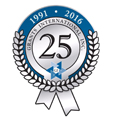What is SR&ED?
SR&ED stands for Scientific Research and Experimental Development and it is a tax credit from the Government of Canada. It's reserved for companies that develop new or improve their own processes or products with the goal of being more competitive in their market.
In other words, it's an incentive to innovate, a reward for creating new or working on your existing systems and products to make your company better. For example, a company notices they could be more competitive by developing or modifying an internal piece of software, machinery, product, etc. If they can demonstrate that they actually did the work, and it can be shown the solution wasn't something that could have reasonably been acquired from a catalogue or applying common knowledge, then there is a high likelihood for this tax credit.
If you answer yes to any of the following questions you may be eligible for a SR&ED tax credit:
- Did you attempt to develop or improve a product, process, material or device? Unsuccessful attempts count too.
- Did you throw out any part of your production yield due to quality control?
- Did you look for ways to cut your production costs?
- Are you required by the government to perform tests or studies in your business?
What are the Benefits?
You get money back
The incentive to innovate ranges anywhere from 35% Cash Back to 79% Cash and Tax Credits for small business and 17% Cash Back to 59% Cash and Tax Credits for large business depending on the project expenses and if it is beneficial to claim the provincial tax credit.
Increase your creative freedom
Knowing what you can recover in costs can lower the financial risk of innovation, make for more effective budgeting and planning, and overall provide greater creative freedom to your business.
Know where you are investing in your business
The documentation required to maximize the benefit of this credit and the corresponding tracking systems that minimize the effort to gather the documentation create valuable habits for managing resources throughout your company. For example, when labour tracking becomes part of your business you can identify when activity is too high in one area and take action, you can go back in history to group labour expenses for programs like SR&ED and generally know where you are investing in your business.

